There’s something irresistible about a sun-drenched garden by the sea, but not every flower is built for salty breezes, sandy soil, and relentless heat. While some blooms seem to glow even brighter under coastal conditions, others struggle—wilting fast or never blooming at all.
If you’re gardening near the ocean (or just love that windswept beach look), the key is choosing plants that naturally thrive in this unique climate. Think vibrant blooms that welcome heat, tough stems that stand up to wind, and species that don’t flinch at a little salt spray.
We’ve gathered 11 gorgeous flowers that flourish by the coast—and 4 that might tempt you, but won’t make it past the first heatwave. Knowing the difference could save you time, water, and a lot of disappointment this summer.
Hibiscus

Known for its tropical flair, hibiscus thrives in coastal heat, offering large blooms in vibrant colors. This sun-loving flower can withstand high temperatures and salty winds, making it a seaside favorite. Its bold presence adds a splash of color to any garden, and it’s perfect for those who love a touch of tropics. Hibiscus flowers attract hummingbirds and butterflies, adding life and movement to your garden. Despite its exotic appearance, it’s relatively easy to care for, needing just the right amount of water and sun. A true coastal gem, hibiscus is both resilient and captivating.
Bougainvillea
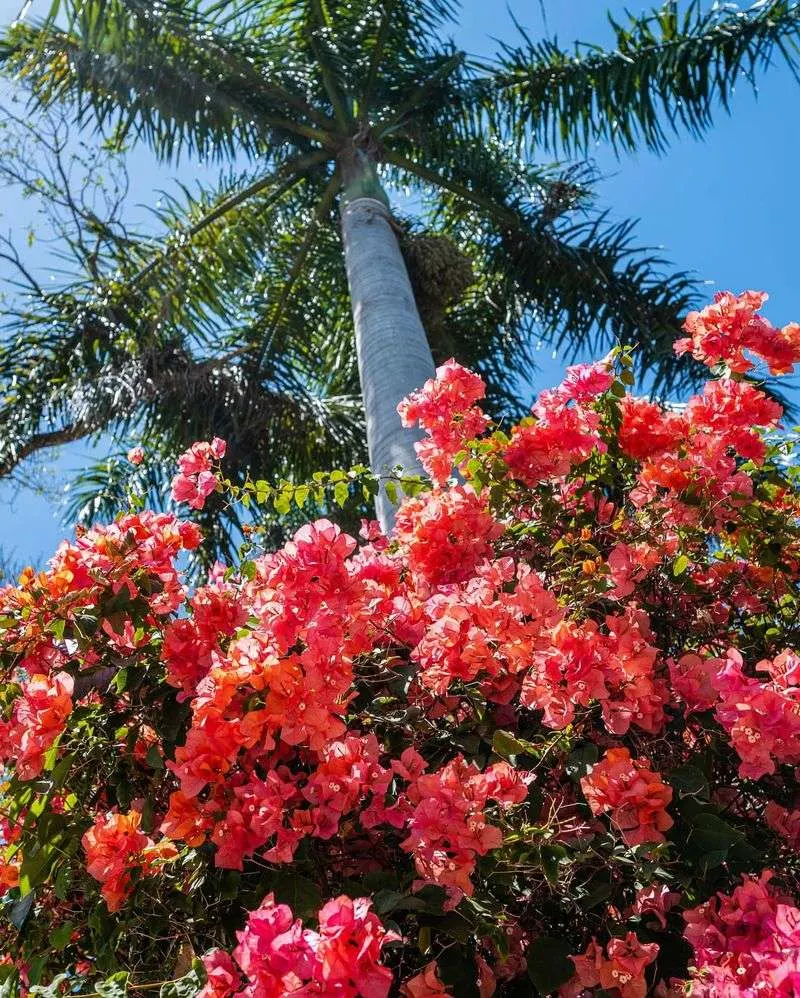
Bougainvillea brings a vibrant explosion of color to any landscape, thriving effortlessly in coastal heat. Its paper-like bracts are not only eye-catching but resilient against the harsh, salty sea air. This flowering vine can cover walls and fences, creating a natural privacy screen with its dense foliage. Its carefree nature means it requires minimal attention—just plenty of sunshine. With its ability to transform a simple garden into a colorful paradise, bougainvillea is a must-have for coastal gardeners looking for a low-maintenance yet striking plant. Let it cascade and charm without a fuss.
Plumeria

The intoxicating fragrance of plumeria is reminiscent of tropical beaches and warm breezes. Plumeria thrives in coastal heat with its striking star-shaped flowers and glossy leaves. It’s a symbol of beauty and grace in any garden. This plant loves the sun and can endure high temperatures, making it ideal for seaside planting. Besides its captivating scent, plumeria is a visual delight, often used in leis and floral arrangements. While it requires some care, like regular watering and pruning, the rewards are bountiful. Plumeria brings both fragrance and elegance to coastal gardens.
Oleander
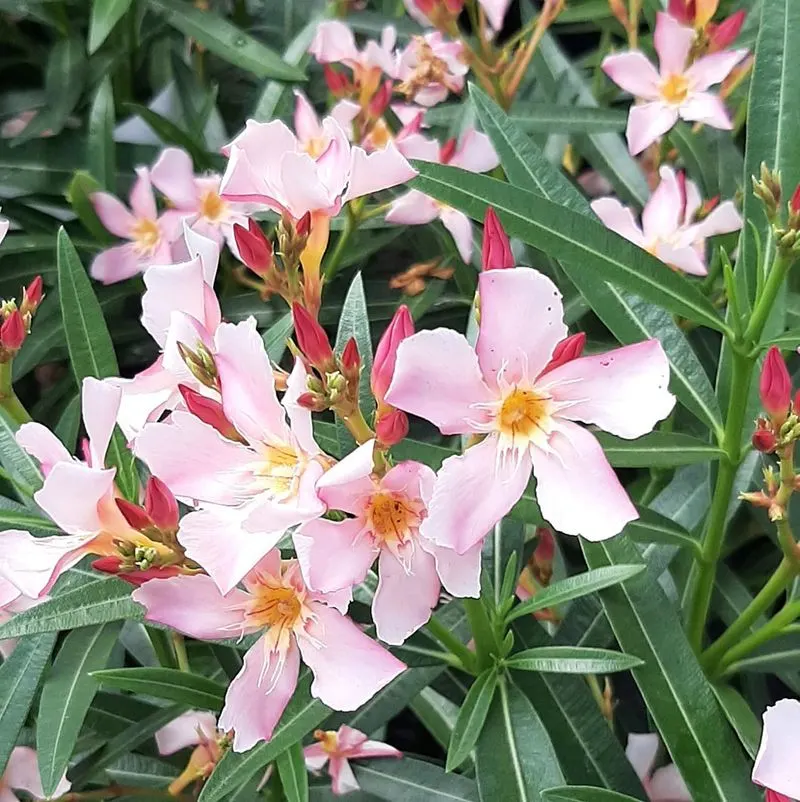
Oleander is a robust plant that stands strong in the face of coastal heat. Its clusters of pink, white, or red blossoms offer a burst of color, perfect for adding life to any sun-drenched garden. Oleander is not only beautiful but also incredibly hardy, tolerating drought and salty conditions. Its evergreen foliage provides year-round interest, making it a reliable choice for coastal landscapes. While all parts of the plant are toxic, its beauty is unmatched, providing a lush barrier or accent plant in gardens. Oleander’s resilience makes it a top pick for coastal gardeners.
Lantana
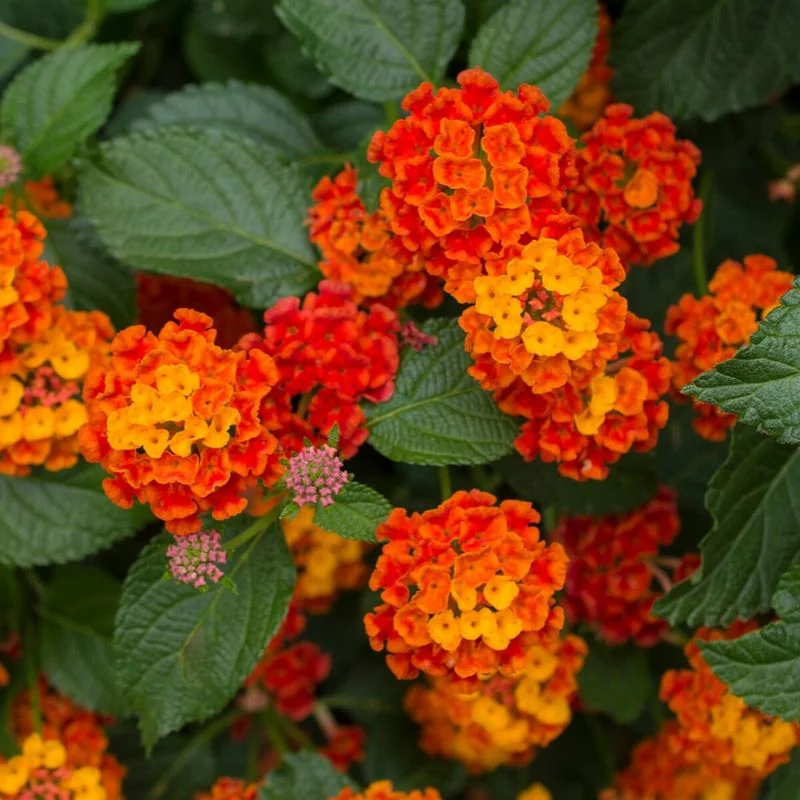
Lantana is a hardy survivor, flourishing under the scorching coastal sun. With clusters of small, multi-colored blooms, it’s a vibrant presence that attracts butterflies and pollinators. Known for its adaptability, lantana can grow in poor soil and withstand salty conditions, making it ideal for seaside areas. This plant is perfect for those who want a splash of color without demanding much attention. Just ensure it has plenty of sunlight, and watch it thrive. Lantana’s resilient nature and eye-catching flowers make it a favorite among coastal gardeners looking for low-maintenance beauty.
Gazania

Gazanias are sun-worshippers, opening their brilliant flowers in response to daylight. These daisies thrive in coastal heat, showcasing vibrant yellows, oranges, and pinks. They can handle drought and salty air, making them an excellent choice for seaside gardens. Gazanias are low-growing, perfect for ground cover or rock gardens. Their ability to bloom profusely with minimal care is a boon for gardeners seeking vibrant color with little effort. Whether lining pathways or filling in garden beds, gazanias offer a cheerful pop of color, embodying resilience and beauty in coastal landscapes.
Sea Holly

Sea holly is an intriguing addition to coastal gardens, known for its spiky blue flowers and unique appearance. This hardy perennial thrives in sandy soils and withstands salty sea breezes, making it perfectly suited for coastal conditions. Sea holly’s metallic blue hue and architectural form add interest to any garden setting. It requires little maintenance, thriving best in full sun and well-drained soil. While it may not be the first choice for traditional flower lovers, its distinctive look and resilience make it a conversation starter and a striking focal point in coastal landscapes.
Blanket Flower
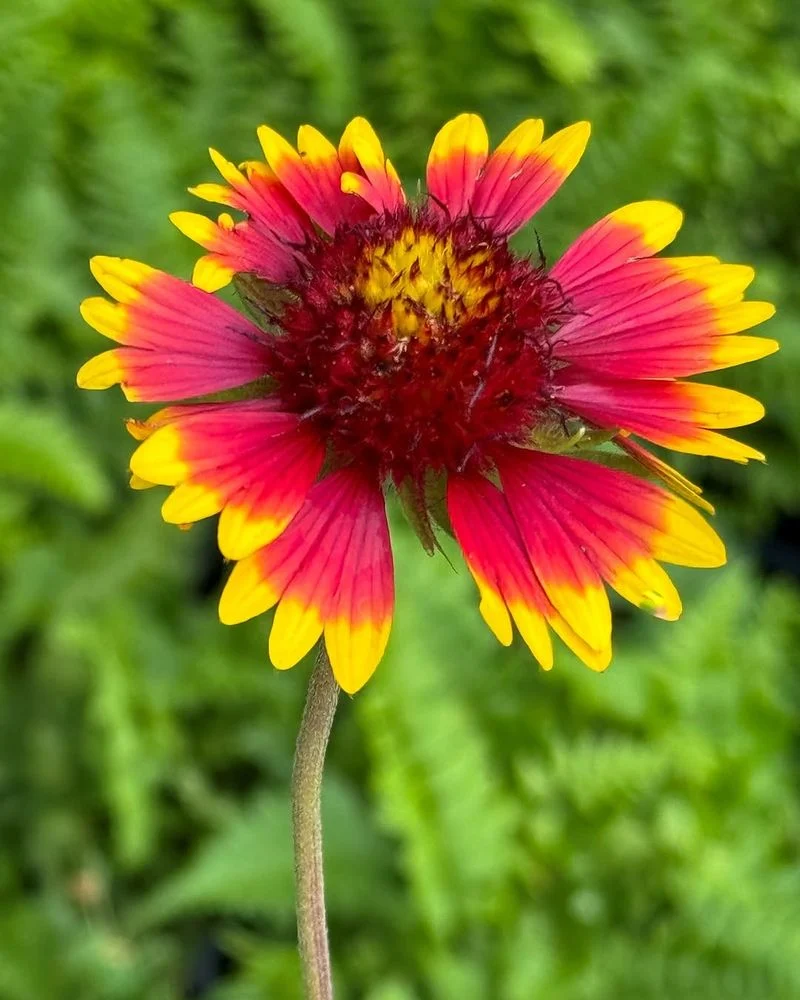
The blanket flower, with its fiery red and yellow blooms, brings warmth and vibrancy to coastal gardens. This flower loves the sun and thrives in sandy, well-drained soils. Its drought-tolerant nature makes it a perfect choice for seaside areas prone to dry spells. Besides its stunning appearance, the blanket flower is a magnet for butterflies, adding life to your garden. It requires minimal care—just occasional deadheading to prolong blooming. With its cheerful colors and hardy nature, the blanket flower is a welcome addition to any coastal garden, offering beauty without the fuss.
California Poppy
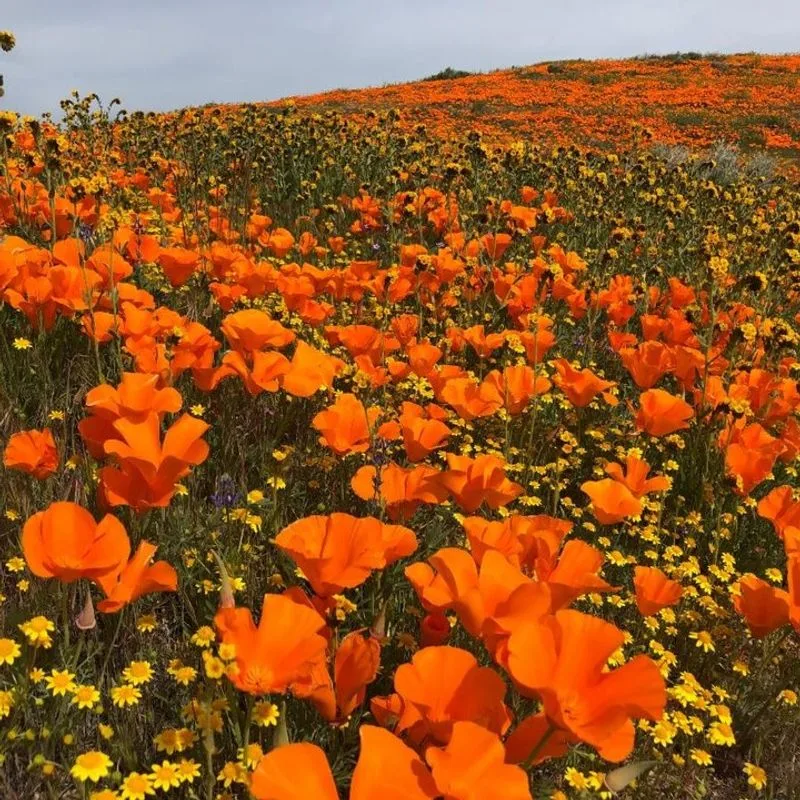
California poppies are a cheerful sight with their vibrant orange petals fluttering in the coastal breeze. These flowers thrive in full sun and well-drained soils, perfect for seaside gardens. Their low water needs and ability to self-seed make them a practical, low-maintenance choice. Beyond their beauty, California poppies contribute to pollinator support, attracting bees and butterflies. While they may appear delicate, their resilience is impressive, standing up to both heat and salty conditions. California poppies offer a touch of wild beauty, bringing a carefree and natural elegance to coastal landscapes.
Agapanthus

Agapanthus, often called Lily of the Nile, is a striking presence in coastal gardens, with clusters of blue or white flowers. This plant loves the sun and can handle salty sea air, making it ideal for seaside planting. Agapanthus is relatively low maintenance, needing only occasional watering once established. Its tall flower stalks add height and drama to garden beds, while the strap-like leaves provide year-round interest. Whether used in borders or as a focal point, agapanthus offers elegance and resilience. It’s a versatile plant that thrives where others may falter.
Lavender Cotton
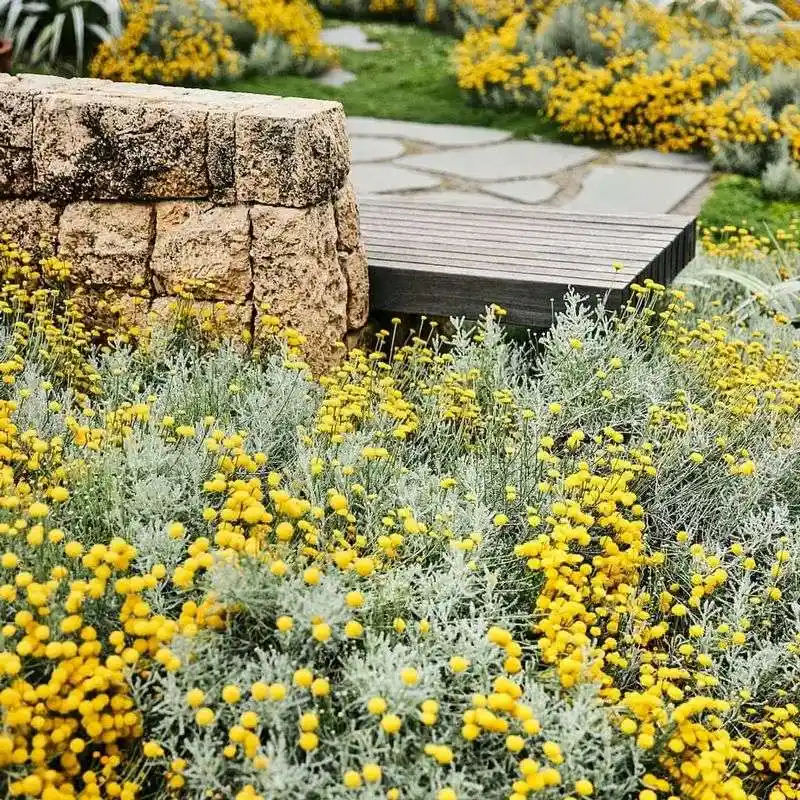
Lavender cotton is a tough shrub, known for its silvery foliage and yellow button-like flowers. It thrives in sandy, well-drained soil, perfect for coastal environments. This plant is drought-tolerant and can withstand salty conditions, making it a reliable choice for seaside gardens. Its aromatic foliage adds sensory appeal, while the bright flowers offer a cheerful contrast. Lavender cotton requires minimal care, needing only occasional pruning. Ideal for borders and rock gardens, it brings texture and color to coastal landscapes. This hardy shrub is both practical and ornamental, enhancing any garden setting.
Astilbe
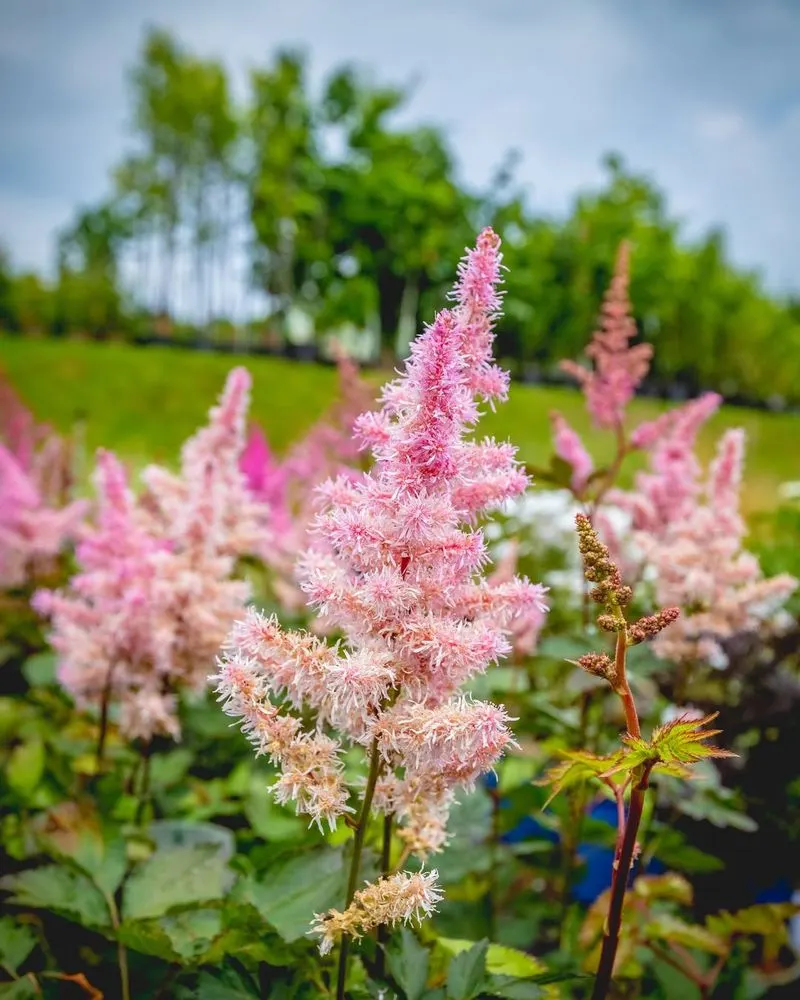
Astilbe brings grace and softness with its feathery plumes, thriving in shady, moisture-rich coastal gardens. It prefers cooler temperatures and is sensitive to direct coastal sun, making it less ideal for exposed areas. However, when given the right conditions, astilbe offers a stunning display with its pink, white, or red flowers. Its fern-like foliage adds texture, providing visual interest even when not in bloom. Astilbe needs regular watering and benefits from mulch to retain soil moisture. While not suited for direct coastal heat, it’s a delightful addition to sheltered garden spots.
Hydrangea
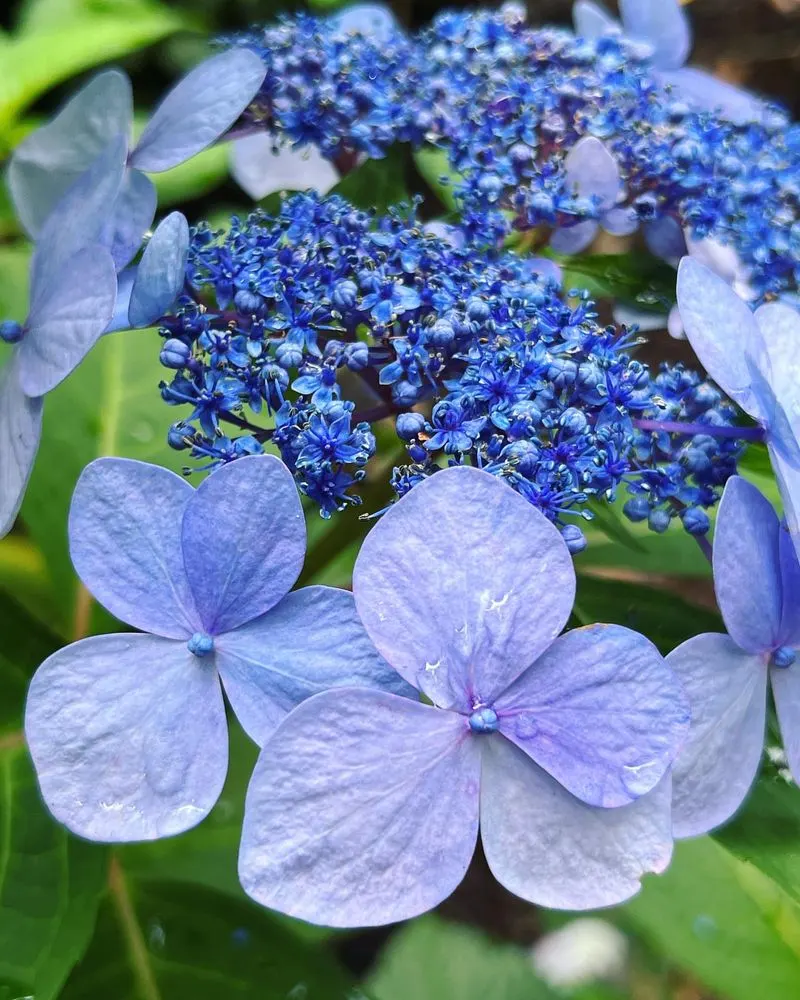
Hydrangeas bring lush beauty to gardens but struggle in direct coastal heat, preferring shade and well-watered soils. These flowers captivate with their large, colorful heads, providing a stunning visual impact. While not suited for exposed coastal environments, hydrangeas thrive in sheltered spots where they can enjoy some respite from the sun. Regular watering and rich soil help these beauties flourish. Their blooms change color based on soil acidity, offering a unique gardening experience. Though sensitive to heat, hydrangeas are a rewarding choice for gardeners who can provide them with the care they need.
Fuchsia
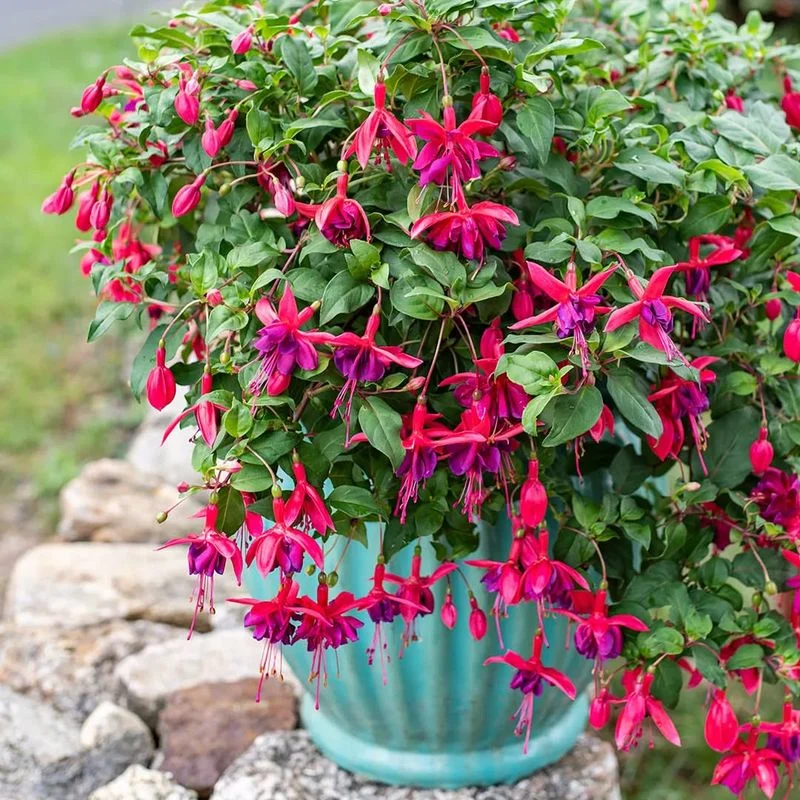
Fuchsias delight with their pendulous blooms, resembling delicate ballerinas in pink and purple. While they offer beauty and elegance, fuchsias falter under harsh coastal heat and sun. They flourish in shaded areas, needing protection from direct sunlight and regular watering. Their trailing habit makes them ideal for hanging baskets and containers in sheltered garden spots. Fuchsias are favored for their vibrant displays, but they demand attention to thrive, especially in coastal climates. Despite their sensitivity, they reward with stunning blooms that dance gracefully, adding charm to any shaded garden setting.
Begonia
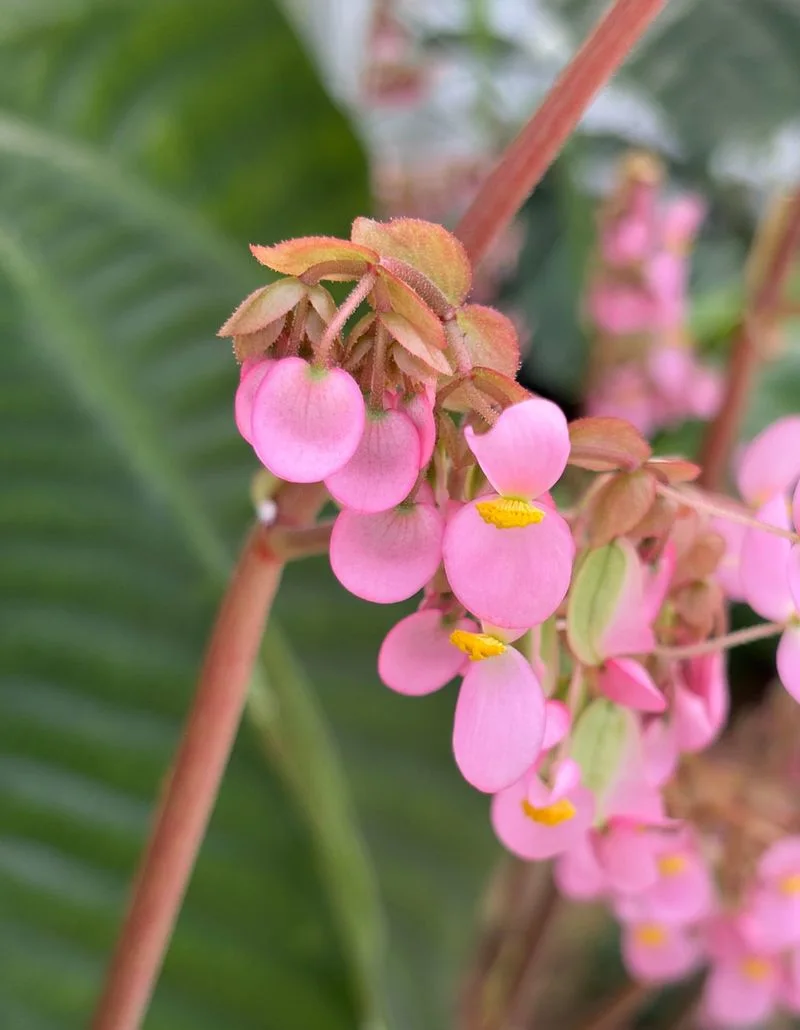
Begonias are beloved for their varied forms and vibrant colors but are not fans of coastal heat. These shade-loving plants thrive in protected garden spots, offering stunning displays with minimal sun exposure. They require well-drained soil and regular watering to prevent drying out. Begonias are perfect for containers or as ground cover in sheltered areas, adding splashes of color where other plants might struggle. While they shy away from direct heat and salty air, begonias are a versatile choice for gardeners who can cater to their needs. Their beauty and adaptability make them garden favorites.

